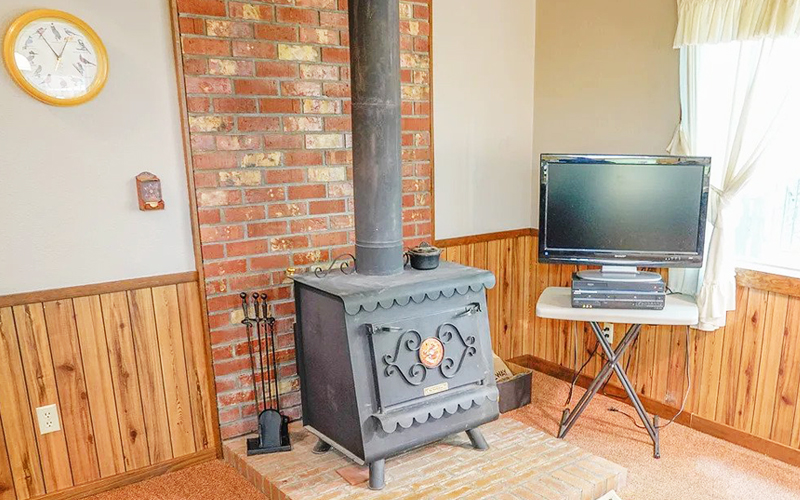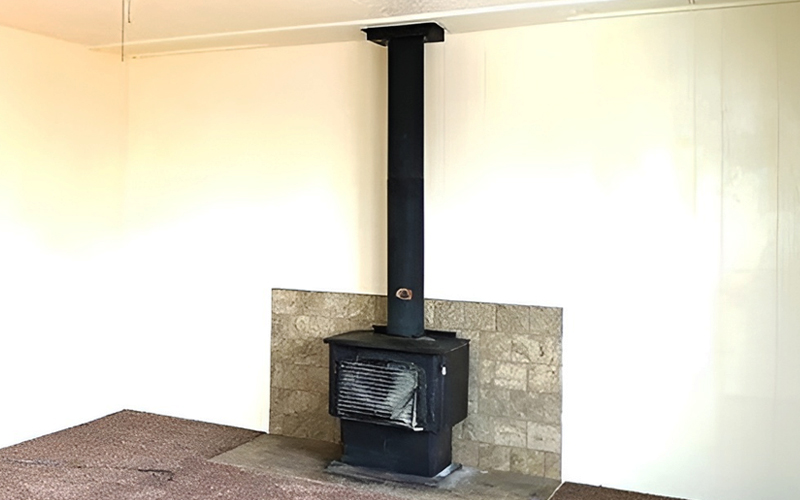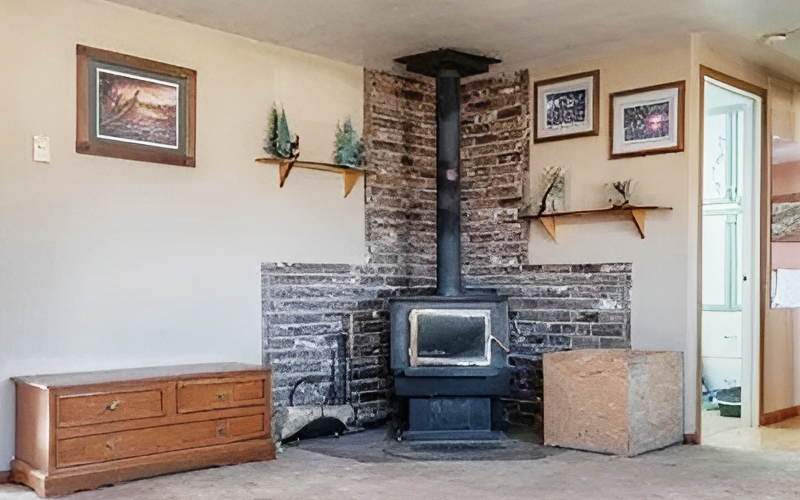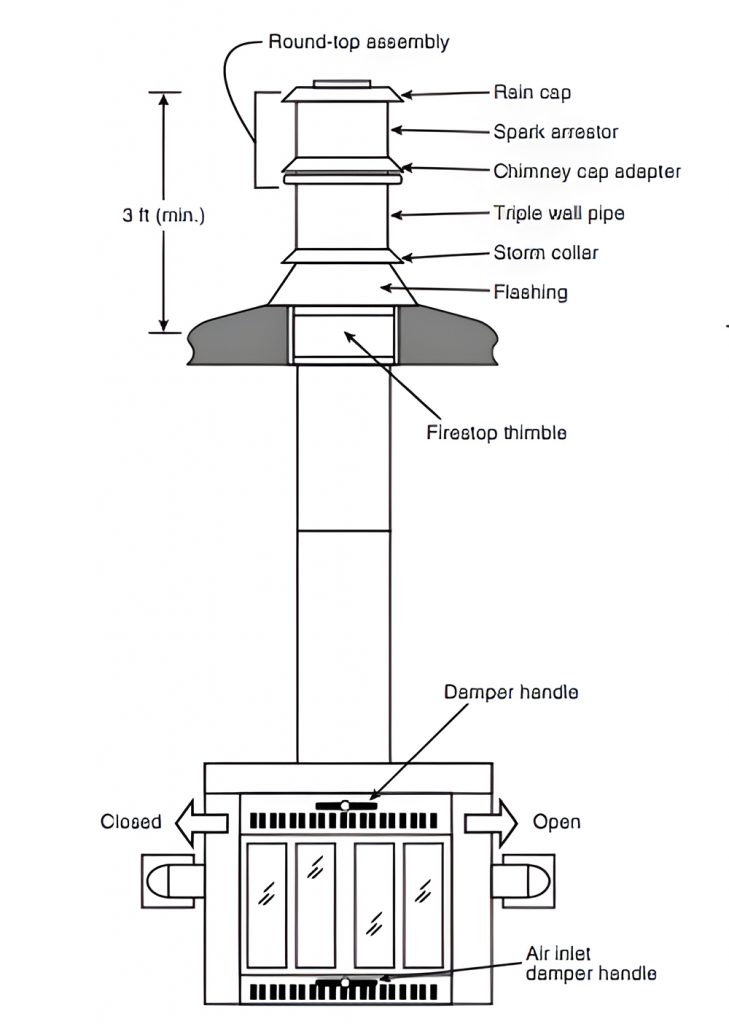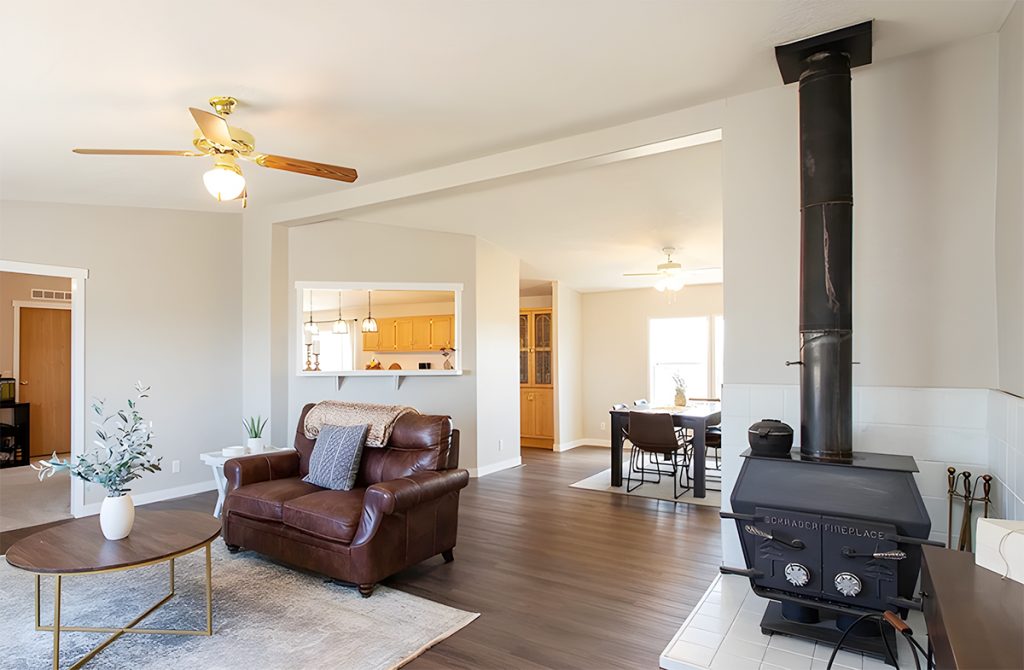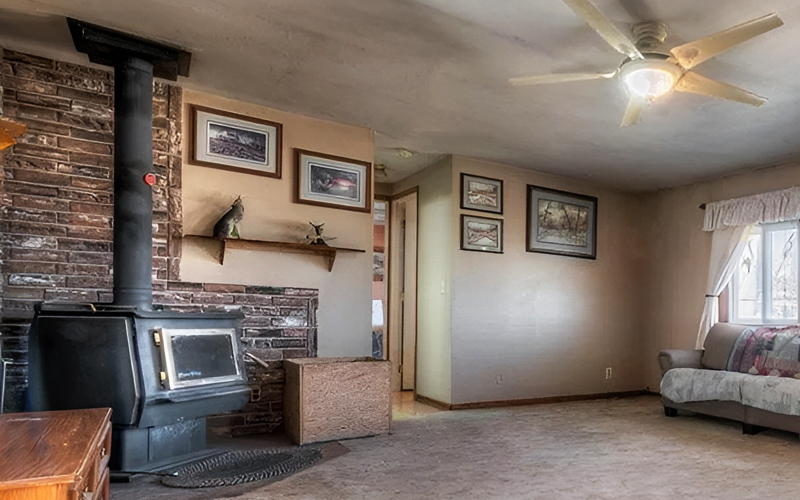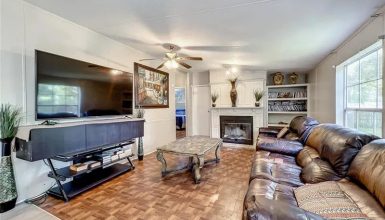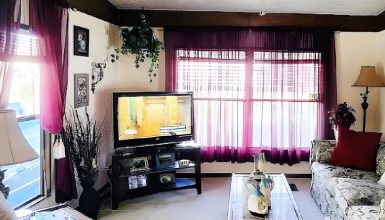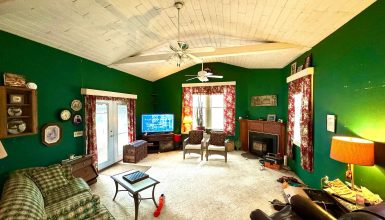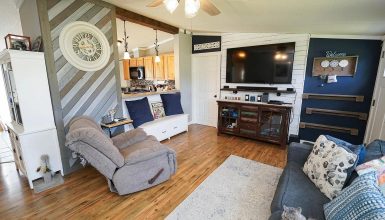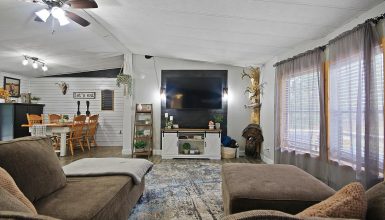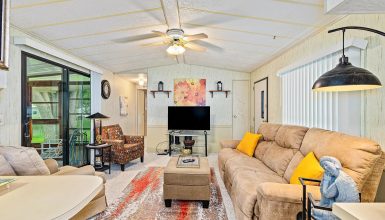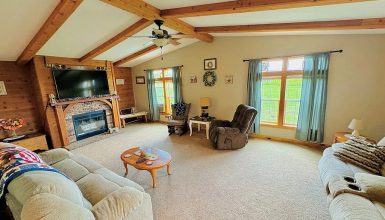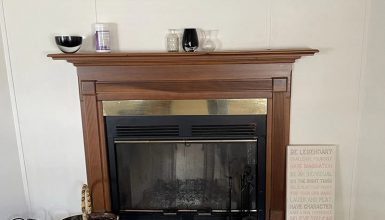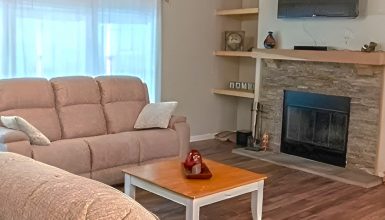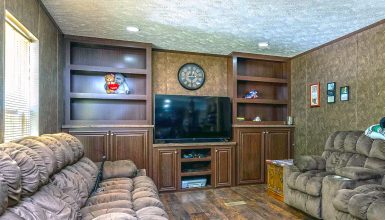If you’re looking for an efficient and cost-effective way to heat your mobile home living room, a wood stove might be just what you need. It is an efficient and cost-effective way to heat your home. Also, wood is a renewable resource often less expensive than other heating fuels like propane or electricity.
However, it’s essential to understand that not all wood stoves suit mobile homes. In this comprehensive guide, we’ll cover everything you need to know to choose an approved wood stove for mobile homes. Also, installing and tips for maintaining your wood stove. Let’s get started!
How Does the Wood Stove Work?
Wood stoves work by burning wood to produce heat. The wood is placed inside the stove and ignited, creating a fire that heats the surrounding air. The heat is then radiated out from the stove, warming the room.
The wood stove is made up of a firebox, where the wood is burned, and a flue. Which carries the smoke and exhaust gases out of the stove and into the chimney. The firebox is typically made of cast iron or steel. It is lined with a firebrick to protect it from the fire’s intense heat.
As the wood burns, it releases heat and combustion gases, which rise up through the flue and out of the chimney. The fire’s heat also heats the stove’s metal, radiating heat into the surrounding air.
Advantages of Wood Stoves
Wood stoves offer several advantages over other types of heating systems, especially when it comes to mobile homes. Here are just a few of the benefits of wood stoves:
- High heat output
Wood stoves are designed to burn wood efficiently, which means they can produce much heat with just a tiny amount of fuel. This can be especially beneficial in mobile homes, where space is often at a premium.
- Cost-effective
While the initial investment in a wood stove can be higher than in other heating systems, the ongoing fuel cost is typically much lower. In fact, many homeowners report significant savings on their heating bills after switching to a wood stove.
- Environmentally friendly
Wood stoves burn a renewable resource, which means they are a more sustainable heating option than systems that rely on non-renewable fuels like oil or gas. Additionally, wood stoves produce fewer greenhouse gas emissions than many other heating systems.
- Aesthetic appeal
There’s no denying the rustic charm of a wood stove. With their crackling fires, warm flames, and classic designs, wood stoves can add a cozy and inviting atmosphere to any mobile home living room.
- Easy to use
A wood stove can provide reliable heat for many years with proper installation and regular cleaning. Unlike other heating systems, there are no complicated controls or maintenance requirements.
Types of Wood Stoves
Several wood stoves are available today, each with unique features and benefits. Here are some of the most common types of wood stoves:
- Freestanding wood stoves
Freestanding wood stoves are stand-alone units that can be placed anywhere. They are available in various sizes and styles, from traditional to modern. They can provide heat to a single room or an entire home.
- Fireplace inserts
Fireplace inserts are designed to be installed into an existing masonry fireplace, converting it into an efficient wood-burning stove. They are available in various styles and sizes and can provide heat to a single room or entire home.
- Pellet stoves
Pellet stoves use compressed wood pellets as fuel, fed into the stove from a hopper. They are more efficient than traditional wood stoves and produce less ash and creosote buildup in the chimney.
- Masonry heaters
Masonry heaters are built into a home’s walls and use the masonry’s thermal mass to store and radiate heat. They are more efficient than traditional wood stoves and can provide heat to a home for up to 24 hours with just one or two daily fires.
- Cookstoves
Cookstoves are wood stoves designed to function as cooking surfaces.
List of Mobile Home Approved Wood Stoves
Here is a list of mobile home approved wood stoves to help you get started on your search:
- Ashley AW2520E-P Pedestal Wood Stove: This sturdy and reliable wood stove is mobile home approved and features a large ash pan for easy cleanup.
- Osburn 3500 Metallic Black EPA Wood Stove: This high-performance wood stove is EPA certified and approved for use in mobile homes. It includes a 130 CFM blower and a firebox volume of 3.5 cubic feet.
- Magnum Countryside Agri-Fuel Pedestal Pellet Stove: This versatile pellet stove is approved for mobile homes and features a self-cleaning firepot technology and up to 32,000 BTU rating.
- Wood Stove Insert with Pewter Door – Model 21ZC: This mobile home-approved wood stove insert features a heat capacity of 800-1,800 square feet and an efficiency rating of 70%.
- England Stove Works Summer’s Heat Pellet SmartStove: This user-friendly pellet stove includes an auto-start igniter and fresh air hook-up kit. It is mobile home approved and recommended for heating areas of up to 2,000 square feet.
How to Choose the Right Wood Stove
When choosing the right wood stove for your mobile home living room, there are a few factors to consider. First and foremost, you’ll want to ensure that the wood stove you select is approved for use in mobile homes. This will ensure that it meets all necessary safety and regulatory requirements.
- Size and Heat Output
Once you’ve narrowed your options to mobile home-approved stoves, you’ll want to think about the size and heat output of the wood stove. Mobile homes are typically smaller and less insulated than traditional homes. Which means that a small stove may be more appropriate. Look for a wood stove with a maximum heat output of around 56,000 BTUs per hour, which is typically sufficient to heat a mobile home living room.
- Style and Design
In addition to size and heat output, you’ll want to consider the style and design of the stove. Various options are available, from traditional cast iron stoves to more modern steel models. Choose a wood stove that fits your taste and complements your mobile home living room décor.
- Type of Fuel
Another essential factor to consider is the type of fuel the stove burns. While wood is the most common fuel for wood stoves, some models are also designed to burn pellets, corn, or other types of biomass. Consider the availability and cost of energy in your area. And any local regulations that may limit the types of fuel you can use.
- Cost
Finally, you’ll want to think about the cost of the stove itself. While wood stoves can be a cost-effective heating option in the long run, the upfront cost of the stove can vary widely. Look for a stove that fits your budget and provides needed features and functionality.
How to Safely Install a Wood Stove in Your Mobile Home
Installing a wood stove in a mobile home living room can be a great way to stay warm and cozy all winter. However, there are some essential regulations you need to know about. Here’s what you need to know to ensure a safe and compliant installation:
HUD Requirements for Wood Stoves in Mobile Homes
The U.S. Department of Housing and Urban Development (HUD) has specific regulations that must be satisfied before a wood stove can be installed in a mobile home. These regulations include:
- Testing and listing: The stove model must be tested by a HUD-approved laboratory and listed for use in mobile homes. Look for a metal tag on the stove’s rear that indicates compliance with HUD Standard UM-84.
- Prefabricated chimney system: A tested and listed prefabricated chimney system must be used, and it must be connected directly to the stove and installed correctly.
- Combustion air ducting: A hard ducting system is required to bring outside combustion air directly to the stove’s air inlet.
- Securing the stove: The stove must be attached to the mobile home’s floor to prevent movement during use.
- Proper clearance: The stove should be installed with appropriate clearance from combustible materials like walls and furniture.
- Chimney height: The chimney should extend at least three feet above the highest point where it passes through the roof.
- Heat shields: Heat shields can be used to reduce clearance requirements.
Step-by-Step Instructions for Installing a Wood Stove
Here are general step-by-step instructions for installing a wood stove in a mobile home living room:
Step 1: Choose a suitable location for the stove
Select a location away from combustible materials like curtains or furniture and provides sufficient clearance for the stove.
Step 2: Install a prefabricated chimney system
Connect the chimney system directly to the stove and install it according to the manufacturer’s instructions. Be sure to choose a chimney system approved for use with your stove that meets all necessary safety and regulatory requirements.
Step 3: Install a hard ducting system
This system should bring outside combustion air directly to the stove’s air inlet. The ducting should be installed according to the manufacturer’s instructions.
Step 4: Secure the stove to the floor
Use brackets or bolts to secure the stove to the floor of your mobile home. This will help prevent movement during use and ensure the wood stove remains stable and safe.
Step 5: Test the stove
Before using the stove, test it to ensure that it is functioning correctly and that there are no leaks or other issues. Having the stove inspected and cleaned regularly is also an excellent way to ensure continued safe and efficient operation.
Step 6: Use the stove safely
Follow all manufacturer’s instructions for using the stove safely and efficiently. Never leave the stove unattended while it is in use, and be sure to keep children and pets away from the stove at all times.
Best Practices for Loading and Lighting The Stove
Properly loading and lighting your wood stove ensures it operates safely and efficiently. Here are some best practices:
- Use the proper kindling.
Use small, dry kindling to start your fire. Twigs, small branches, or the crumpled newspaper can work well.
- Create an air pocket.
Arrange your kindling in a small pyramid shape, leaving a space in the center for air to flow.
- Add small pieces of wood.
Once the kindling is burning well, add small pieces of dry, seasoned wood to the fire.
- Don’t overfill the stove.
Only add enough wood to the stove to maintain a steady, even flame. Overfilling the stove can cause excessive heat and potential fire hazards.
- Keep the stove door closed.
Keep the stove door closed while the fire burns to maintain airflow and ensure efficient combustion.
- Use the draft control.
Adjust the draft control on your stove to control the rate of combustion. This can help to maintain a steady, even flame and prevent excessive heat.
- Clean out the ash regularly.
Clean out the ash from your stove regularly to prevent buildup and ensure efficient operation.
Maintaining Your Wood Stove
Properly maintaining your wood stove can provide reliable heat for many years. Here are some tips for keeping your wood stove:
- Clean the stove and chimney regularly.
A buildup of soot, creosote, and other debris can reduce your stove’s efficiency and increase the fire risk. Clean the stove and chimney regularly according to the manufacturer’s instructions.
- Check for damage
Regularly inspect the stove and chimney for signs of damage, such as cracks, rust, or corrosion. If you notice any damage, have it repaired as soon as possible to ensure continued safe and efficient operation.
- Replace gaskets and seals.
Over time, the gaskets and seals around the stove door and other areas can wear out and become less effective. Replace them as needed to ensure that the stove is airtight and efficient.
- Use proper fuel
Use only dry, seasoned wood cut and stacked for at least six months. Avoid using treated wood, painted wood, or other materials that can release toxic fumes when burned.
- Keep the area around the stove clear.
Ensure no combustible materials like curtains, furniture, or decorations are near the stove. Keep the area around the stove clear to reduce the risk of fire.
- Build a proper fire.
To build a proper fire, start with a small amount of kindling and gradually add larger pieces of wood. Ensure the wood is arranged correctly to ensure good airflow and efficient combustion.
- Monitor the stove temperature.
Monitor the stove’s temperature to ensure it is not getting too hot or cold. This can help prevent damage to the stove and reduce the fire risk. A stove thermometer can help you monitor the stove’s temperature and ensure that it operates safely and efficiently.
Troubleshooting Common Issues with Wood Stoves
While wood stoves can provide reliable and efficient heat for your mobile home, they can sometimes experience issues that must be addressed. Here are some common problems and troubleshooting tips:
- Poor draft
If your stove is not drafting correctly, it may be due to a clogged chimney or inadequate airflow. Ensure the chimney is clear of debris, and consider installing an outside air kit to improve airflow.
- Excessive smoke
If your wood stove produces excessive smoke, it may be due to wet or green wood, a dirty stove or chimney, or inadequate airflow. Use dry, seasoned wood, and regularly clean the stove and chimney.
- Difficulty lighting a fire
If you’re having trouble getting your wood stove to light, it may be due to inadequate kindling or airflow. Ensure you are using enough kindling to get the fire going. Consider using a stove fan or opening a window to improve airflow.
- Uneven heat distribution
If your wood stove is not heating your mobile home living room evenly. It may be due to improper stove placement or inadequate circulation. Ensure that the stove is placed in a central location and that there is proper air circulation throughout the room.
- Cracks or leaks
If you notice cracks or leaks in your wood stove, it may be due to wear and tear or damage. Have the stove inspected and repaired by a professional to ensure safe and efficient operation.
Conclusion
A wood stove can be a great heating option for your mobile home living room, offering efficient and cozy warmth throughout winter. You can enjoy the many benefits of a wood stove in your home by choosing a mobile home-approved model, properly installing and maintaining your stove, and using it safely and efficiently. Thank you for reading!


